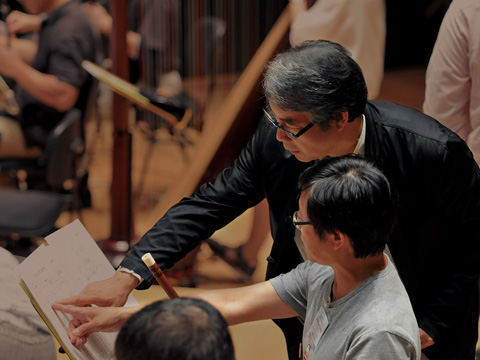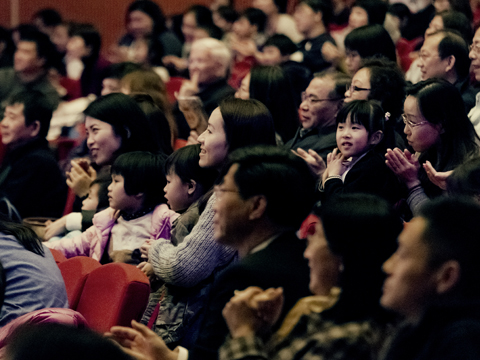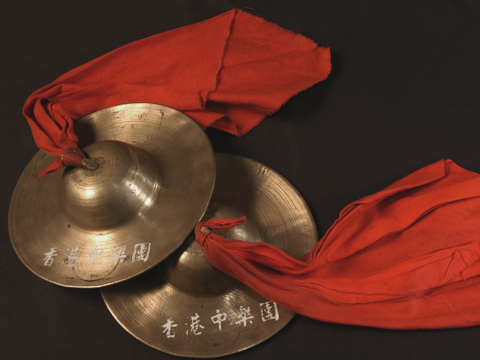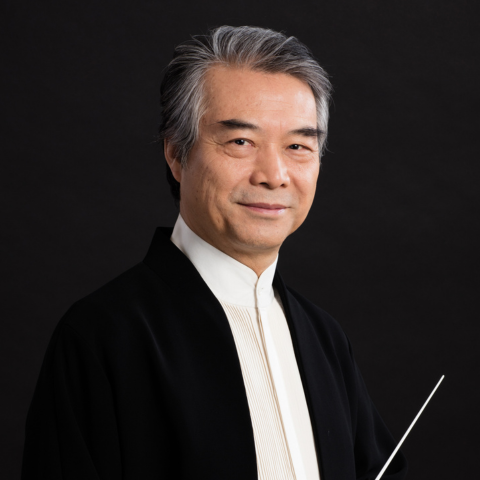
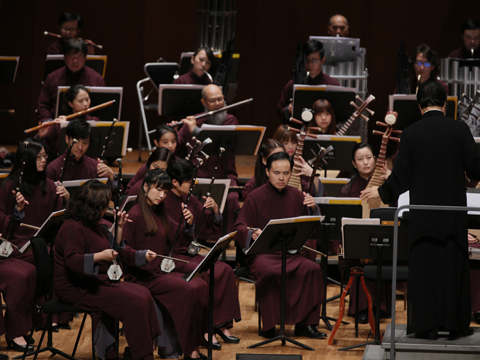
HKCO
Hong Kong Chinese Orchestra Environmental, Social and Governance Artistic Director and Principal Conductor for Life Orchestra Members Council Advisors & Artistic Advisors Council Members Management Team Vacancy Contact Us (Tel: 3185 1600)

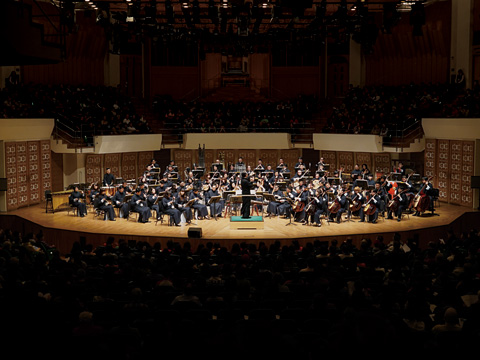
Concerts


Education
The HKCO Orchestral Academy Hong Kong Youth Zheng Ensemble Hong Kong Young Chinese Orchestra Music Courses Chinese Music Conducting 賽馬會中國音樂教育及推廣計劃 Chinese Music Talent Training Scheme HKJC Chinese Music 360 The International Drum Graded Exam

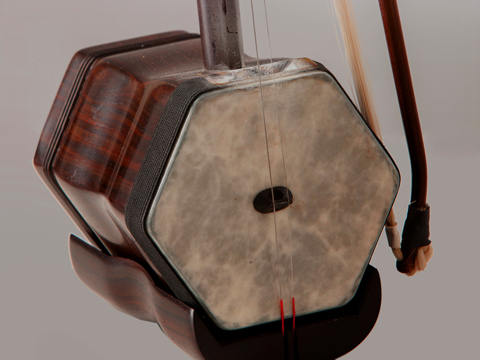
Instrument R&D
Eco-Huqins Chinese Instruments Standard Orchestra Instrument Range Chart and Page Format of the Full Score Configuration of the Orchestra
44th Orchestral Season
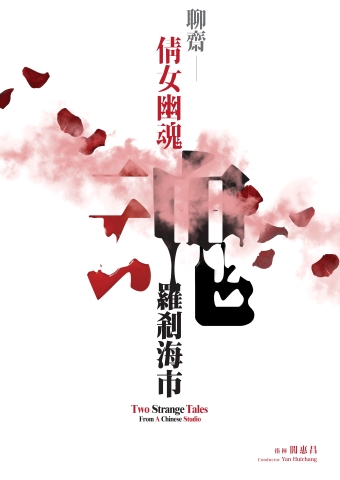
Two Strange Tales From A Chinese Studio
This concert presents two beautiful fables from Liaozhai (Strange Tales from a Chinese Studio) to illustrate the transience and impermanence of life.
In the first story, the female ghost Nie Xiaoqian, who is coerced into harming people by a demon, meets the scholar Ning Caichen. Moved by his integrity, she decides to help him escape and takes the plunge into forbidden love.
In the second story, the handsome Ma Ji enters Raksha Country by mistake. He puts on face makeup to survive the country’s reversed standards of beauty, but ends up turning his own morals upside down.
1. Prelude
2. Scholar Ning’s Visit to the Temple
3. First Encounter with Nie Xiaoqian
4. Yan the Swordsman Offers a Word of Advice
5. The Love Pledge under the Moon
6. The Old Witch Intervenes
7. The Fight with the Demons
8. The Doomed Love between a Mortal and a Ghost
Adventures in the Raksha Country and the Sea Market Kong Zhixuan (Commissioned by the HKCO / World Premiere)
Suite No. 1
1: Prelude The Debonair Scholar
2: Storm at Sea
3: Impressions of Raksha
4: Changing His Looks for Career Advancement
Suite No. 2
1. The Prosperous Sea Market
2. The Magical Dragon Palace
3: The Scholar and the Beauty
4: Coda Returning Home When the Pre-ordained Days are Over
The Transitions in Life in an Ever-changing World
Chow Fan-fu
This concert tells Chinese folk tales with Chinese music. The title of the concert is even more salient: A Ghostly Love Story and The Raksha Country and the Sea Market from Liaozhai.
Allegorical tales a treasure trove of inspirations
Liaozhai is the abbreviated title of Liaozhai Zhiyi (Strange Tales from a Chinese Studio), a literary work which has been translated into many languages and gained international fame. Written by Pu Songling (1640 - 1715) in the Qing Dynasty, it is a collection of 496 short stories grouped into twelve volumes, with wide- anging contents spanning the human and supernatural realms. Since most of its contents depict relationships between men and fox demons and ghosts, this collection is also known as Foxy Tales. Allegedly by providing free tea at a tea kiosk for passers-by, Pu collected these stories, compiled and published them in volumes afterwards. It follows that these folk tales reflected largely the social landscape of its times in the 17th century. Although the subject matter revolves around fox demons and ghosts, the irony is not lost on readers that ghosts and demons can be more humane than humans themselves.
The nearly 500 allegorical short stories in Liaozhai depict mostly love relationships between scholars and fox demons, expressing social discontent and the pursuit of love. There are the odd stories which are simple in plot, with their sole purpose being to impress with an eerie and absurd storyline; some are painfully short with only a dozen or so words. Apart from being love stories between men and flower demons and fox demons, they are also used to criticize the corrupt institution of civil service examination, expose the dark side of politics and society, and chastise the indolent nature of humankind; others are about vicious ghosts endangering humans, homosexuality, loyalty in friendship, brotherly love, fengshui (geomancy) and superstitions, and honorable, righteous acts, etc. They make up nothing short of a long genre painting scroll.
Most stories in Liaozhai have interesting plots with broad and colourful characterisation. Very often, the characters and plot developments are highlighted successfully with vivid depiction of scenery as the backdrop. The narrative is highly intricate and well-honed, its style rich in the romantic tradition. For this, Wang Shizhen (1526 – 1590), Pu Songling’s good friend and village kin, wrote a poem in praise of his work thus: “These are just tales, so we might as well take them as such, just like the trickling rain under the bean and melon trellises. But I guess being bored by stories about our world, we love listening to ghosts chanting poems by the autumn graves”. Ostensibly treating them lightly, Wang implies Pu’s fantastic stories do have a moral basis – which explains why Liaozhai is still widely revered today and remains a treasured source of artistic inspiration.
Music extends the territory of text
Jin Fuzai and Kong Zhixuan, both well-known composers in China commissioned to write original works for this concert, use different musical treatments respectively to “narrate” two very different stories in Liaozhai.
Jin has chosen A Ghostly Love Story from Vol. II of the 12-volume Strange Tales from a Chinese Studio. Its original title was Nie Xiaoqian, the titular 18-year-old girl who died young and became a ghost of unrivalled beauty. It has remained the most well-known and most adapted among all the stories in Liaozhai. Not only is it made countless times into movies, TV series, stage dramas and animations, it also features often in many variety shows. Kong Zhixuan’s Adventures in the Raksha Country and the Sea Market is sourced from Raksha Country and the Sea Market from Vol. IV of Liaozhai. Compared to A Ghostly Love Story, it is perhaps more of an “odd” choice.
Although both Jin and Kong adopt the suite in a full Chinese orchestra as the mode of narration, there are yet differences between them. A Ghost Love Story uses the storyline of the film version, narrating the plot in eight movements. One very special feature is the conductor’s simultaneous role as storyteller, introducing the characters and scenes of each movement as represented by the musical themes. On the other hand, in Kong’s Adventures in the Raksha Country and the Sea Market, there are two suites consisting of four movements each which are performed non-stop in the narration.
A common feature of these two musical tales is that for each movement of the suites, there is a concrete title, which makes it easier to grasp the respective musical content or even the storyline itself. Yet, music is after all not drama; it cannot fully represent complicated plot developments. The composer hence exploits the strength of music, which is to move the audience by giving the characters a three-dimensional image and giving shape to the storyline and the lively background atmosphere through musical sounds.
In fact, in these two allegorical musical tales of Liaozhai, music has expanded the territory of text. The audience listens to the love story between a man and a ghost in A Ghostly Love Story, and further reflects on their courage in pursuing true love. In Adventures in the Raksha Country and the Sea Market, the protagonist enters a fictional realm where ugliness is beauty and truth is subverted, where he faces the dilemma of choosing between romantic love and filial piety, and the reality of chasing after wealth and position for survival. But the emotional impact of these two musical tales is perhaps the insight that often comes with music: the world never stops changing and life is never constant; so cherish the present moment and find joy therein.
Your Support
Friends of HKCO
Copyright © 2025 HKCO
